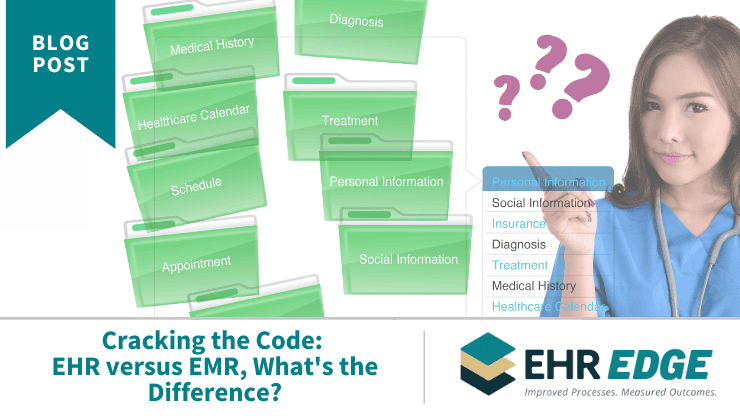What Is an EMR (Electronic Medical Record)?
Electronic Medical Records (EMRs) focus primarily on the clinical aspects of patient care within a single healthcare organization or practice. EMRs typically contain medical and treatment histories, diagnoses, medications, and test results generated by healthcare providers within that specific facility. While EMRs serve as digital versions of traditional paper charts, they’re limited to the scope of a single provider.
What is an EHR (Electronic Health Record)?
On the other hand, Electronic Health Records (EHRs) represent a comprehensive digital repository of a patient’s medical history. EHRs include treatment plans, diagnoses, medications, allergies, laboratory test results, and more. They’re designed to include data from all healthcare providers involved in a patient’s care. This enables seamless information exchange across different healthcare settings. EHRs offer a holistic view of a patient’s health status, promoting coordinated and patient-centered care delivery.
Complete the form to schedule your consultation and join our email list
The EHR/EMR Interchangeability Conundrum
However, in recent years, the distinction between EHRs and EMRs has become increasingly murky, leading to widespread usage of these terms interchangeably. Technological advancements and interoperability initiatives have propelled EHR systems to encompass functionalities traditionally associated with EMRs, such as clinical documentation, order entry, and decision support tools. Similarly, EMR systems have evolved to incorporate features facilitating data exchange and interoperability with external healthcare entities, resembling the broader capabilities of EHRs.
How Did We End Up with EMRs and EHRs in the First Place?
Somewhat surprisingly, the story of EMRs and EHRs starts several decades earlier. Here’s a very basic timeline on the use of electronic records in healthcare.
The 1960s and ‘70s
In the 1970s, the federal government began using an Electronic Health Record within the Department of Veteran Affairs.
The 1980s
The 1990s – Early EMR Adoption
The Early 2000s – EHR Development
2004 – The Establishment of the ONC
2009 – EHR Definitions and the HITECH Act
Around this same time, The Healthcare Information and Management Systems Society (HIMSS) defined and Electronic Health Record as, “a longitudinal electronic record of patient health information generated by one or more encounters in any care setting.”
The 2010s – Meaningful Use
EHRs Versus EMRs – The Bottom Line
That is, both healthcare providers and their patients accrue benefits from having comprehensive, portable, and interoperable records. As a result, most practices delivering physical medicine have now implemented an EHR due to those benefits, and other Health and Human Services agencies are starting to follow suit.
About EHR Edge
EHR Edge is a trusted partner for Human Service Agencies, helping them navigate change with confidence. Our collaborative approach empowers your team, streamlines workflows, and drives lasting success, so you can focus on making a meaningful impact in your community.

